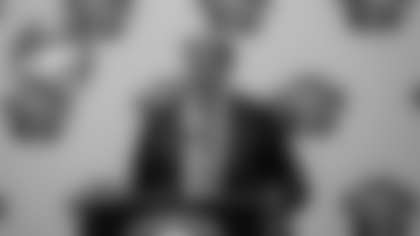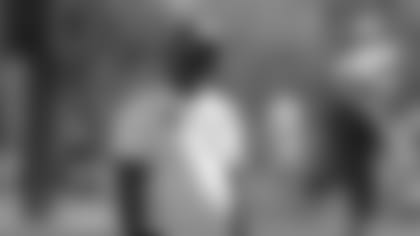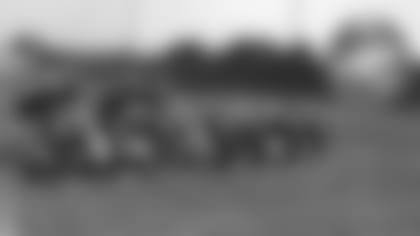*The Packers take on the Rockford Maroons in a preseason game on October 2, 1921. The Packers won by a score of 49 to 0.
*
In 1921, the Green Bay Packers' maiden season in what is now the National Football League, four players joined them after starting out with the Rock Island Independents. A year later, the Packers acquired four more players from the Independents.
Also in 1922, with the Packers literally drowning in red ink, George Whitney Calhoun, the team's co-founder and secretary of the Green Bay Football Club, wrote with envy about the support Rock Island received from its fans.
"Rock Island is the best supported professional football team in the middle west," Calhoun wrote in the Green Bay Press-Gazette. "At least that is what Manager Flannagan(sic) claims and he has the evidence to back up his statement… The Rock Island merchants consider the team an asset to the city and every fall they cut loose the purse strings and tell Flannagan(sic) to spare no expense to put a winner on the field. The Islanders have their own practice field, they are housed together in a 'two family' apartment and their own chef prepares all the meals for the pigskin stars."
That season, the Green Bay Football Club lost $1,500 when a game-long downpour held down attendance for the Columbus game and took another bath when a Thanksgiving "Booster Day" game against Duluth was ruined by a comparable rainstorm and wind gusts up to 46 miles per hour.
However, Calhoun later described the Thanksgiving Day disaster as "the turning point" in Packers history. It set in motion the events that led to the Packers becoming a community-owned team through a public stock sale.
Rock Island, on the other hand, was reeling not long into the 1923 season and its death spiral might have been triggered by an extended road trip to Green Bay and other parts of Wisconsin.
Study the circumstances and interactions of the two franchises while they coexisted and one can't help but wonder if they didn't get caught up in the same vortex of history and nothing more than fate smiled on one, but not the other.
Perhaps even the forces of evil were at play: the likes of John Barleycorn and Mother Pierre's roadhouse.
When the Rock Island Independents joined the American Professional Football Association as a charter member in 1920, they had been in existence for eight straight years and represented a city of 35,177 people. Together, the Quad Cities – Rock Island and Moline, Ill.; and Davenport and Bettendorf, Ia. – had a population of 115,574.
Much like the Packers, they also had the full support of their local newspaper.
If there was any paper in the country that covered pro football at the beginning better than the Press-Gazette, it was The Rock Island Argus.
In the days before radio broadcasts of pro football games, the Argus also took credit for being the first newspaper in the country to hook up a special wire at the site of an out-of-town game so a play-by-play could be transmitted and announced at a public gathering back home. In fact, the Press-Gazette subsequently stole the idea from the Argus.
While the play-by-plays were delivered indoors in Green Bay to crowds of 1,000 or so, at best, an estimated 4,000 fans jammed Second Avenue in Rock Island to follow the results when the Independents played the Chicago Staleys at Cubs Park on Nov. 13, 1921.
Before the season, the Argus also produced an eight-page football and advertising supplement and turned the proceeds over to the Independents.
Meanwhile, when Green Bay joined the year-old APFA it had a population of 31,017, second smallest in the league, and its team had only two years of semipro experience.
The Independents also had the better team, beating the Packers, 13-3, on Oct. 30, 1921, at Green Bay's Hagemeister Park.
But soon thereafter things started to change.
As the Packers replaced their homegrown players with more experienced hands, they claimed four from the Independents: Frank Coughlin, Dave Hayes, Emmett Keefe and Grover Malone. All four had played collegiately at Notre Dame around the same time as Lambeau, but not with him in 1918.
Why did those players abandon the Independents in midstream and join the Packers? It all depends on whose story you believe.
After Hayes, Malone and Coughlin, who doubled as coach of the Independents, were released on Oct. 18, 1921, the Argus explained Hayes and Malone were living in Chicago, 170 miles away, and Coughlin in South Bend, Ind.
"There(sic) names were stricken from the roster yesterday afternoon when Manager Walter Flanigan announced a new policy calling for the residence in Rock Island of every player," sports columnist J.L. Hughes wrote in the Argus. "The three in question were notified by wire that they are free to look elsewhere for employment."
Hughes further explained the Independents were practicing daily and Flanigan was no longer willing to jeopardize "teamwork and harmony" by playing big-name players who weren't part of the team except on game day.
Hughes also criticized Coughlin for being a "big disappointment." Hughes added, "His work in three games indicated he had no intentions of risking injury if it could be avoided."
When the Packers quickly signed Hayes and Malone, the Press-Gazette declared the team's "stock has taken a big rise." When Coughlin signed a week later, the paper labeled him "one of the greatest footballers in the country."
The downside was that by the third league game, the Packers had to wait until Thursday to hold practice before facing Evansville at home because so few of their players were living in Green Bay. Prior to their final two league games, both played in Chicago against the Cardinals and Staleys, the Packers didn't practice until Friday and had to hold their workouts in Chicago because it was more convenient for their players.
Rock Island finished, 4-2-1, losing both of its games to the champion Staleys, who became the Bears the next season; while Green Bay finished, 3-2-1, in what was a 21-team league.
In 1922, the Packers signed Jug Earp, Eddie Usher, Dewey Lyle and Dutch Lauer off the Independents' roster. Earp was the first to join the Packers after being released by Rock Island on Oct. 10, 1922.
"Earps(sic) grew heavy and fat during the off-season and after nearly a month showed no promise of return to the form which characterized his play last season," Hughes wrote.
The Press-Gazette, on the other hand, stated that Earp had asked for his release from the Independents. "According to Dame Rumor all is not well with Flannagan's(sic) aggregation and there is a lot of internal friction between the players," the paper added.
"Picking up discards seems to be the favorite sport of the Green Bay management," Hughes countered.
Earp would play 11 seasons for Green Bay and is a member of the Packers Hall of Fame.

A crowd takes in a Packers game at 1922.
Nine days before Earp was released, he had started at center for the Independents when they beat the Packers, 19-14, at Rock Island's Douglas Park.
When they met again on Oct. 29, 1922, in Green Bay, the game ended in a scoreless tie, despite the Packers playing without an injured Lambeau.
The outcome raised more than just suspicions in Rock Island.
The year before, the Independents spent five days before their game against the Packers practicing at the fairgrounds in Manitowoc and then headed to De Pere the day before the game.
They were the toast of the town in both cities, according to several newspaper accounts.
This time, the Independents arrived in De Pere on Saturday morning and spent the night there at the Broadway Hotel. They also stayed for three nights after the game before heading to Manitowoc to prepare for their next scheduled encounter against the Milwaukee Badgers.
The Independents clearly enjoyed their time in the Green Bay area. And they weren't the only NFL team that did during Prohibition, no matter how paltry the crowds in Green Bay were at times.
"Green Bay in the '20s was the most popular stop in the league," Dan Daly and Bob O'Donnell wrote in "Pro Football Chronicle," their thoroughly researched book about the game's history. "Visiting players loved the place. Teams made it a point to schedule several days there. It had a bustling bar scene, and its red-light district in the northeast section was famous."
It was no secret Green Bay never stopped serving alcohol during Prohibition, which spanned from 1920-33, and also didn't shut the doors of its houses of ill repute for years after.
In 1928, Green Bay's City Council even passed a resolution protesting a federal raid where 48 speakeasies were padlocked. In its wording of the resolution, the council openly confessed saloons were operating within the city under the watchful eye of the local police department.
Mother Pierre's, on the other hand, was located beyond the city limits and no madam in the area was more famous.
"(Johnny) Blood once checked into the Packers huddle with a pass play from coach Curly Lambeau," Daly and O'Donnell wrote. "He made the call, then turned to quarterback Arnie Herber and said, 'Arnie, throw it in the direction of Mother Pierre's whorehouse.
"Herber, no stranger to the Green Bay nightlife, knew Blood was heading for the goal post at the northeast end of the stadium. The pass was there, and so was Blood."
While the Argus didn't cover the game in Green Bay in 1922, it received enough feedback from Rock Island fans who were there to suggest the Independents might have been the victims of Green Bay's bright lights, or red lights, if you will.
"Another thing, ugly rumors are being circulated," Hughes wrote the day after the scoreless tie. "It is said some of the members of the team are finding late hours and 'soda pop' poor physical conditioners. If this is true, it's time for reckoning."
The next day, Hughes offered this note: "One fan who made the trip north names four players who fought at every turn of events. The others, he says, didn't know they were in a football game."
Meanwhile, the Press-Gazette reported Usher, Rock Island's star halfback, had asked for his release following the game so he could remain in Green Bay and play for the Packers.
Four days later, Hughes informed his readers that Flanigan had ceased providing the Argus with updates about his team. In turn, the paper's reduced coverage reflected it.
On Sunday, Milwaukee cancelled its game with Rock Island at the last minute rather than play in a driving rain and lose a bundle of cash. That way the Badgers owners also avoided paying Rock Island its guarantee.
On Nov. 22, Flanigan was forced out as Rock Island's manager. Lyle and Lauer asked for their release and joined the Packers.
On another front, the financial records of the Rock Island franchise were audited and the Argus reported, "so far the books are found to be in good condition."
The Packers finished 7-2-1 and had a better record than the 2-3-3 Independents for the first time.
Rock Island survived two more seasons in the NFL and actually finished ahead of the Packers both years. In July 1926, the Independents dropped out of the NFL and joined Red Grange's upstart American Football League, only to fold before the season ended.
Pro football was dead in Rock Island, despite the Independents compiling a 27-14-12 record in their six NFL seasons, including 3-1-1 vs. the Packers.
In 1927, the NFL pared its membership from 22 to 12 teams and bid adieu to most of its small towns. Green Bay not only survived, but also hosted one of three league meetings where the cuts were made. To this day, it's the only NFL meeting ever held in Green Bay.
Not surprisingly, a good time was had by all, or so it seemed.
"I knew when the league meeting was arranged for Green Bay that we would have an enjoyable time," President Joe Carr gushed, "but the hospitality of everybody has exceeded my fondest expectations."















